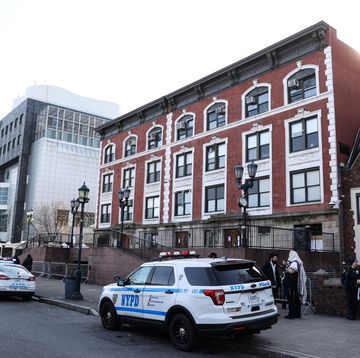Even when you're flying around the freeways that encircle the desolate city, you can see them: shadows of homes looming vacant along the same arteries Detroit's former residents used to exit the place. You head into the actual neighborhoods, and there's maybe one occupied house on any given block—the rest fester in abandonment. Blight has crept over the landscape in the 60 years it has taken the city's population to dwindle from 1.8 million to less than 700,000.
When Detroit was booming—from the 1920s through the 1950s—these structures were middle-class dream homes for the new Americans working the city's factories. They were built as tough as the people themselves, framed out with old-growth Michigan forests. Oak with growth rings that count back to the 300 years before it was cut. Douglas fir rough-sawed into true-to-measure 2 x 4s—2 full inches by 4. Brilliant red gum used for mere joists. Dense southern yellow pine. All of it superior to, and sturdier and more beautiful than, any wood used in construction in the past 30 years.
An estimated 240 million board feet of the old lumber still props up the 78,506 dilapidated and abandoned homes that a task force has marked for teardown. All of that wood, if it's in good enough condition, can sell for the same price—around $2 per foot—as new oak, cherry, and maple. And with reclaimed wood having a moment, 240 million board feet can make a lot of countertops.
Two nonprofit groups, Architectural Salvage Warehouse of Detroit and Reclaim Detroit, are undertaking a massive urban-excavation project, deconstructing the run-down structures into the pieces they were built from. Deconstruction is doing construction work backward, reclaiming any materials that can be returned to the marketplace in the process. They take their crews—usually unemployed workers, former felons, or unskilled laborers who get training and work as part of the workforce- development programs—into the sagging homes and systematically piece the place apart. Reclaim Detroit alone has already trained more than 300 people since it was started in 2011.
It's expensive. Deconstruction of a single house requires a skilled team of five to six men and about three days, while a straight demolition is two guys and an afternoon. But in a city where unemployment hovers around 15 percent, it doesn't hurt to put extra people to work. And the money from the sale of the reclaimed lumber pays for the training and wages of more workers. The organizations have made their case so well that Mayor Mike Duggan has declared deconstruction an institutionalized part of the blight-removal effort.
So, among century-old Polish immigration papers and yellowed birth certificates tucked into long- forgotten corners, from behind graffitied walls in the abandoned kitchens where the American dream played out two or three times over, the crews pull out the lumber. Architectural Salvage Warehouse stamps the original address on each piece of wood extracted, more an act of remembrance than organization. They and Reclaim Detroit have shipped lumber to New York and California. They've taken orders from Tokyo, installed reclaimed wood in a LEED-certified McDonald's, and sold pieces to individuals and designers who value the wood for its air-dried patina and old-growth grain.
But the wood is best on display in Detroit itself. Inside new coffee shops, restaurants, and startup offices in the awakening parts of the city, reclaimed lumber is showing up as tables and walls. The old Detroit is propping up the new.













